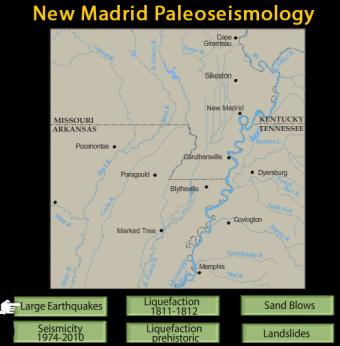
Learn about past large earthquakes, liquefaction, seismicity, sand blows, and landslides in this interactive map.
ABOUT TO GO AWAY: IRIS is going to discontinue Flash animations in 2020. If you have a Flash player app and would like a copy, download this .swf file.
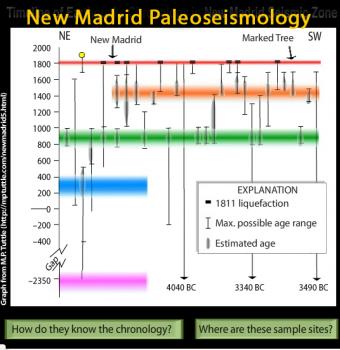
This interactive timeline shows that the 1811-12 earthquakes in New Madrid weren't the first.
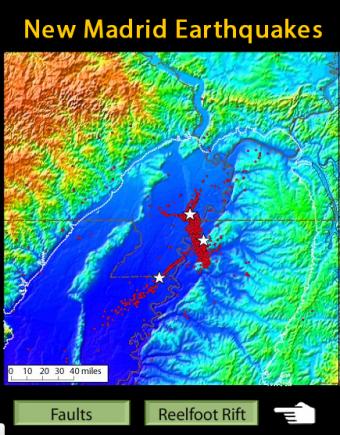
There are four major faults in and around the Reelfoot Rift related to earthquakes in the New Madrid area.
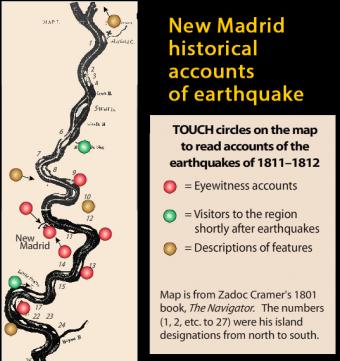
Many residents along the Mississippi experienced vigorous ground shaking and wrote about it in 1811 and 1812. Touch spots on map to read accounts of the devastation. For example, for spot #10, hover over the spot to watch an animation about how the river ran backwards (as witnessed by local residents.)
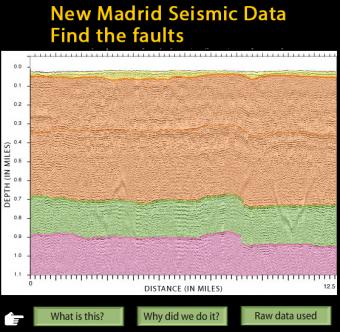
Raw seismic data gives us information about the ground beneath us. This interactive cross section shows faults beneath the New Madrid area.
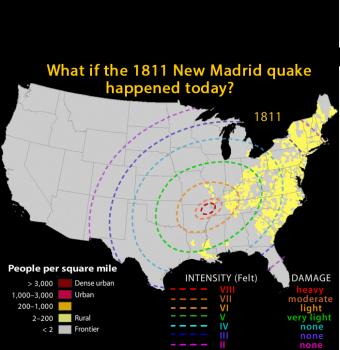
Scroll over the timeline from 1800 to 2010 to see the population of the United States grow to see what the impact of the 1811-1812 New Madrid earthquake would have today.